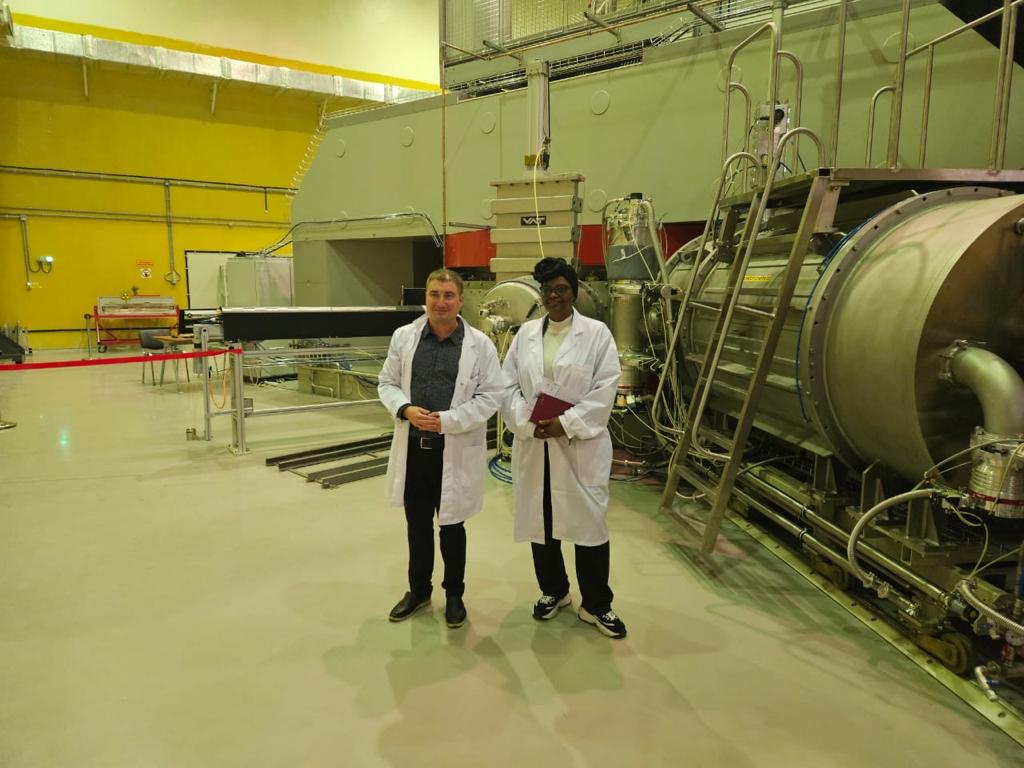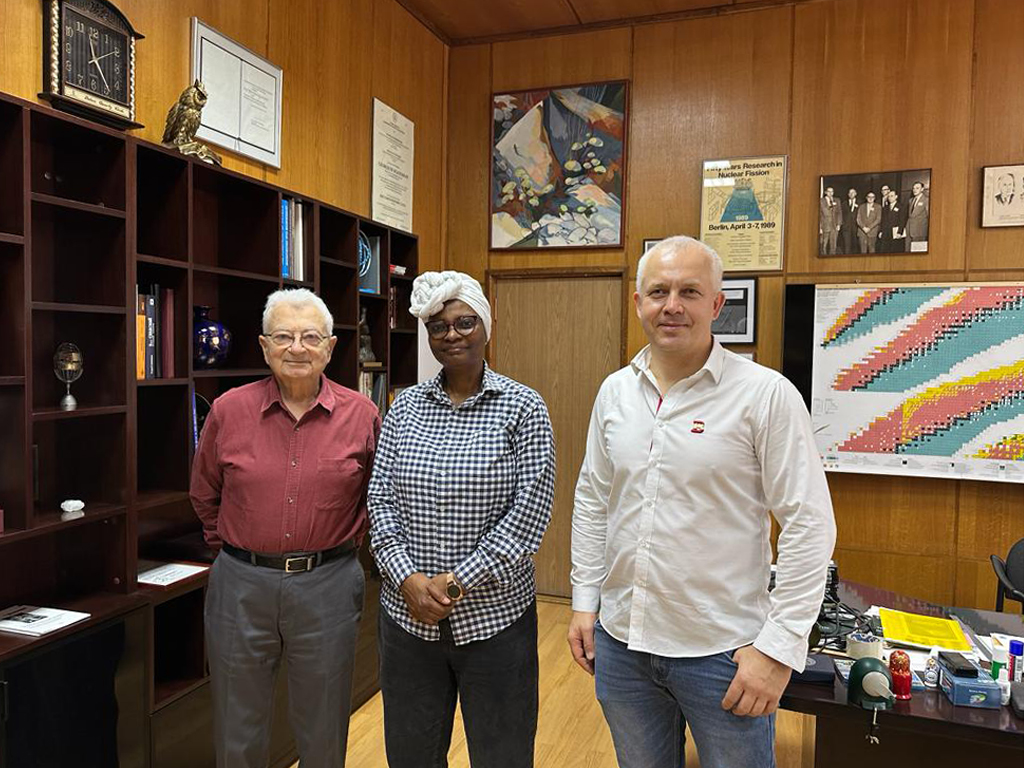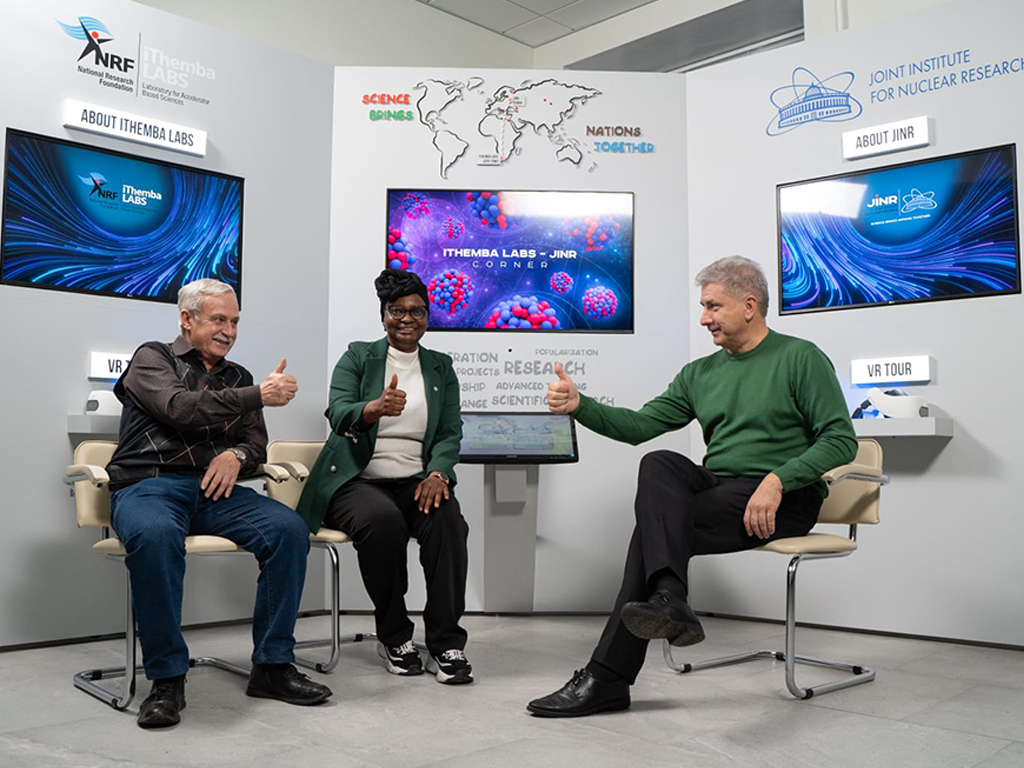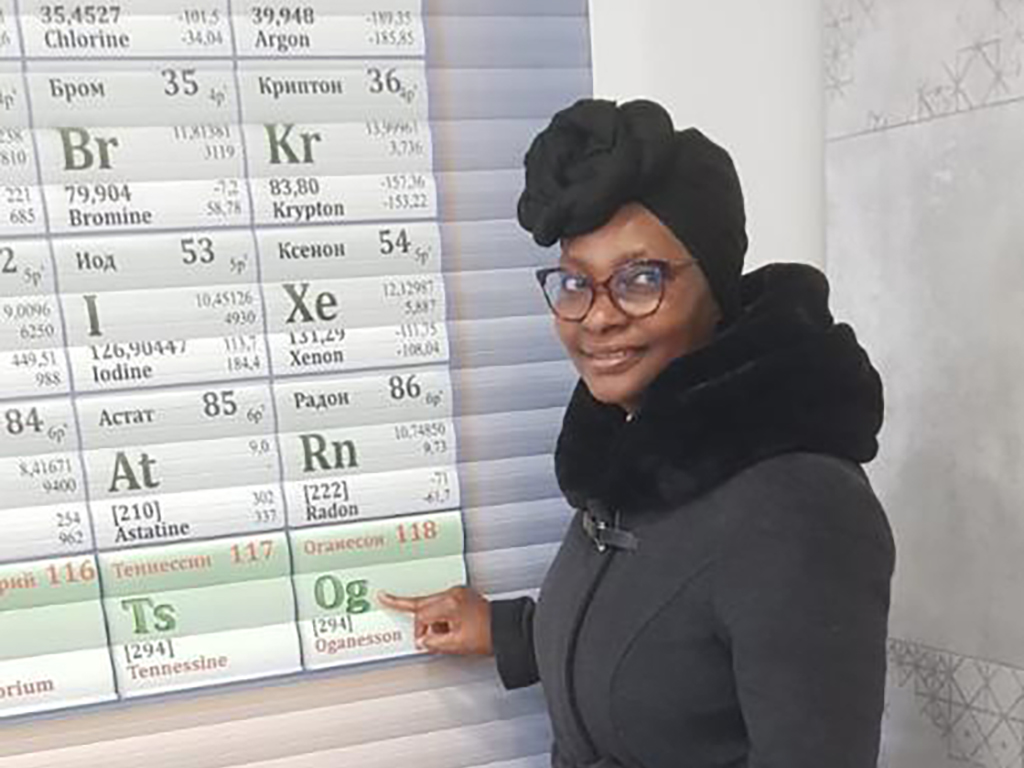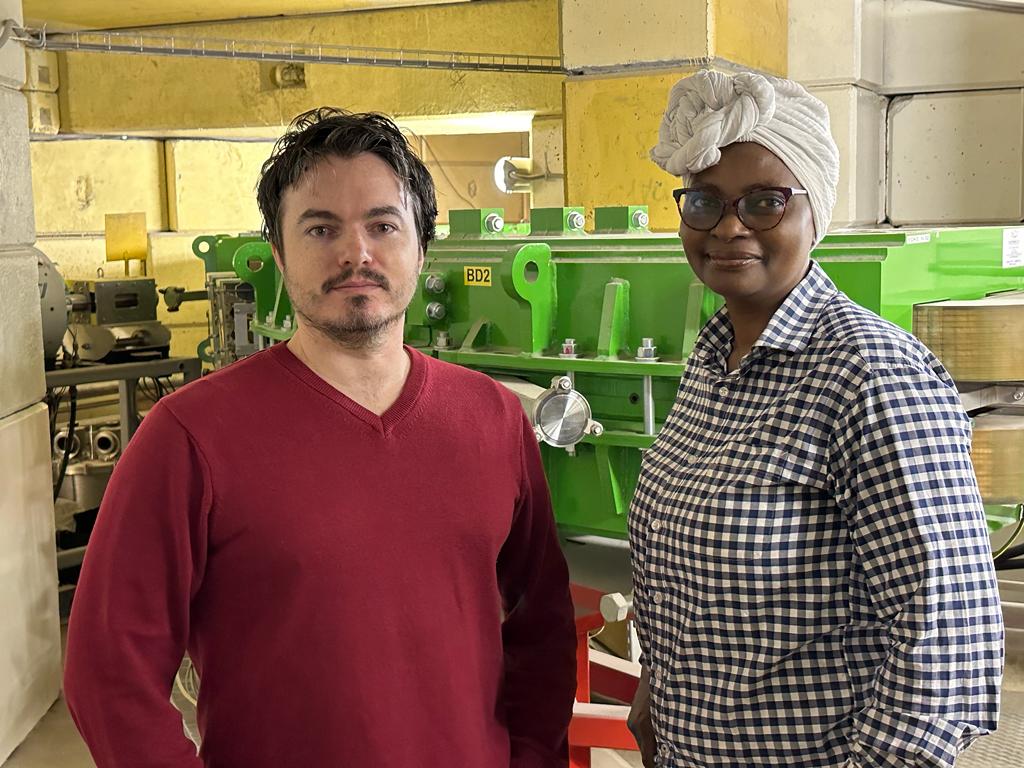Giant resonances for SA-JINR Collaboration
News, 05 December 2023
The SA-JINR board coordinator for nuclear physics, Dr. Iyabo Usman from the University of Witwatersrand (Wits) in Johannesburg, South Africa, visited the Joint Institute for Nuclear Research from 2 to 8 November 2023 as part of the ongoing JINR-SA collaboration. During her visit, Dr. Usman presented a Joint Low-Energy Nuclear Physics Seminar at the Bogoliubov Laboratory of Theoretical Physics (BLTP) and visited the Flerov Laboratory of Nuclear Reactions (FLNR). While there, she discussed the possibility of new joint projects between Wits and FLNR researchers and opportunities for other SA universities as well.
Dr. Usman also became acquainted with the Superheavy Elements (SHE) Factory, and experimental setups: MAVR, SHELS, CORSET, and the ACCULINNA-2 separator. The main purpose was to discuss new scientific projects and joint experiments, such as the Giant Dipole Resonances at the MAVR spectrometer and theoretical analysis in collaboration with BLTP. Dr. Sergey Lykyanov headed a discussion of a future realisation of this project as a prospective collaboration between FLNR, Wits, and iThemba LABS. Further discussions with the sector head Dr. Eduard Kozulin took place regarding the possibility to perform a multi-nucleon transfer reactions and fission fragments detection experiment.
FLNR Scientific Leader, Prof. Yuri Oganessian, highlighted to Dr. Usman the new areas of studies at the SHE Factory. Additionally, FLNR Deputy Director Dr. Grzegorz Kaminski presented the potential of light exotic nuclei studies at the U400M + ACCULINNA-2 experimental complex. Possibilities for new scientific and technical collaborations as well as opportunities for SA students were discussed with Dr. Arnoux Rossouw, Head of the South African Group at JINR.
Concluding the visit Dr. Dmitry Kamanin had the opportunity to interview Dr. Usman, accompanied by the BLTP project leader Dr. Valentin Nesterenko in front of a new JINR Info Centre installation that will be permanently relocated in January 2023 to iThemba LABS in Cape Town.
“My role in this cooperation is to serve in the SA-JINR collaboration as the coordinator for the Nuclear Physics Research Group,” Dr. Usman said. She is one of several groups leaders under the iThemba LABS in SA-JINR Coordination Committee. Despite various directions of research that make up this collaboration, Dr. Usman highlighted that she represents only the Nuclear Physics sphere but that the collaboration as a whole embodies the JINR logo, stating that “Science Brings Nations Together,” and thus, “as from the south to west, east to north, we all speak the same language [in science].” Dr. Usman and her group have been in close collaboration with JINR, specifically Dr. Nesterenko from BLTP, since 2016.
Dr. Usman emphasised that the secret to their highly successful collaboration was creating a very good network of research scientists, not only in one direction of research, but many, while being enthusiastic, hardworking, and making contributions to every part of every project for it to be successful. This also applies to the joint work with Dr. Nesterenko on electric multipole giant resonances (GRs) which has been ongoing for the past eight years.
Scientists have shown great interested in GRs in nuclei since they carry valuable information on the structure of finite nuclei and the basic characteristics of nuclear matter. More exact measurements of the fine structure of GRs have only recently become possible. Specifically, such high-precision facilities are available at iThemba LABS in South Africa where, over the last few years, the fine structure of monopole (E0), dipole (E1), and quadrupole (E2) GRs has been measured in inelastic scattering of alpha-particles and protons. The resulting experimental data require delicate theoretical treatment within modern microscopic self-consistent models including the wavelet analysis. Theorists from BLTP are in possession of such models and their corresponding computer codes; therefore the two groups “naturally come to each other and need each other,” noted Dr. Nesterenko in the interview – a perfect match of facilities and knowledge. Many publications in numerous papers of leading scientific journals have already come out of this collaboration, signalling its success.
A joint BLTP-iThemba project significantly facilitates mutual research visits and contacts has been ongoing for the last three years, but is now coming to an end. In 2022, BLTP scientists visited Wits in Johannesburg. The continuation of the BLTP-iThemba project for next three years has basically been arranged and will assume a further in-depth analysis of iThemba experimental data and the development of proposals for future experiments.
The National Research Foundation of South Africa also encourages the collaboration and exchange of scientists from South Africa with those of JINR and has ongoing calls for proposals of new joint projects. They aim to improve cooperation in this way, which is how Dr. Usman was able to come to Dubna, describing her trip in a very positive light.
Dr. Rossouw stated that Iyabo’s commitment to fostering collaboration and innovation within the SA-JINR initiative, as demonstrated through her dedicated coordination of the Nuclear group, embodies the true spirit of progress and empowerment.
On the history of this committee, Dr. Rossouw mentioned that the iThemba LABS SA-JINR Coordination Committee was originally established based on the 22 SA-JINR Research Grant participants. Dr Rossouw concluded that, since its inception, the committee’s unwavering dedication to facilitating effective communication and fostering a spirit of unity within the SA-JINR collaboration sets a remarkable precedent for collaborative success and meaningful scientific advancements, and we look forward to expanding on our experience going forward.
Dr. Usman hopes that the cooperation with JINR can be strengthened through the active inclusion of young scientists for the transfer of knowledge and idea sharing while also encouraging input from both sides, stressing the importance of communication and a higher level of connection between JINR and South Africa.
Dr. Nesterenko and Dr. Usman highlighted that they have a vast amount of data yet to be analysed as part of their project and, therefore, they are also in collaboration with many others, such as Germany, the Czech Republic and Slovakia. Although this project is coming to an end soon, they hope that additional projects will become available in order for them to continue working together, visit each other’s institutes and build on the body of knowledge of Nuclear Research.
